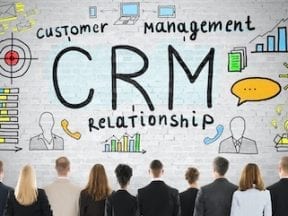Demographics play a role in attracting prospects. But it’s behavioral targeting that converts those visitors and keeps them coming back.
Shoppers’ actions — how they navigate the site, what they purchase, how they pay — help determine what they’ll do next.
Merchants should consider:
- Behaviors to target, such as frequent browsing, visited pages, or purchases from specific product categories.
- What prompts each customer to buy. Some are motivated by coupons; others prefer product recommendations.
Aside from browses and purchases, track shoppers’ email and SMS engagement, customer support requests, returns or exchanges, product reviews, and testimonials.
Also, incorporate on your site non-invasive, single-question surveys. Amazon uses such surveys to offer relevant recommendations. The company also suggests products based on each customer’s purchase history.

Amazon asks simple questions — such as “Are you a fan?” at top left — to boost sales on specific products.
Build Segments
Use journey mapping to segment customers. This helps personalize the experience on- and off-site. For example, you could adjust the frequency of marketing emails based on how often recipients interact. Many of today’s popular email marketing platforms — Mailchimp, Salesforce Marketing Cloud, many more — have APIs to connect email actions to on-site, real-time messaging.
You could also prioritize offerings based on a customer’s browsing or purchase history. Shopify, Miva, and BigCommerce are just a few platforms that can natively build datasets based on customer purchases. And most carts support third-party plugins and scripts to manage recommendations or replace blocks of content based on a customer’s history.
By focusing on behavior, a sporting goods store could recommend an overstock of blue parkas to customers in colder regions who had purchased other clothing in that color. A makeup brand could showcase “more likely to buy” products to loyal customers while offering the store’s most popular items to newcomers.
Segmenting based on behavior helps brands identify what to offer and when — increasing the potential for quick conversions.
Real-time Marketing
Use segmentation and anticipated actions to deliver the best content to each customer in real-time. Here are a few examples.
- Use conditional data fields to personalize the shopping experience, including product offerings and checkout flow — e.g., “if a customer purchased a blue shirt, display a blue parka.”
- Prioritize offers based on a customer’s lifecycle and behavior — you may not have to offer as many discounts.
- Adjust abandonment emails based on previous and current activity — messaging should reflect product types and price ranges.
- Display custom messaging to those about to leave the site without purchasing. OptinMonster and similar tools gauge shoppers’ intents to deliver messages at ideal times.
- Adjust frequencies of SMS alerts and marketing emails based on clicks and purchases.
- Generate on-the-fly emails or text messages based on specific actions, such as reading a blog post or watching a video.
- Display prime recommendations based on where the shopper came from, such as a referral from another website.
A/B testing various “rules” for what happens when shoppers perform certain tasks helps identify the best solutions for each action or segment.
Personalization
Personalization is a driving force behind successful ecommerce sites. Demographics provide the basics to get started. But as shoppers interact with the brand, their behavioral portfolio grows, providing crucial, actionable information.




